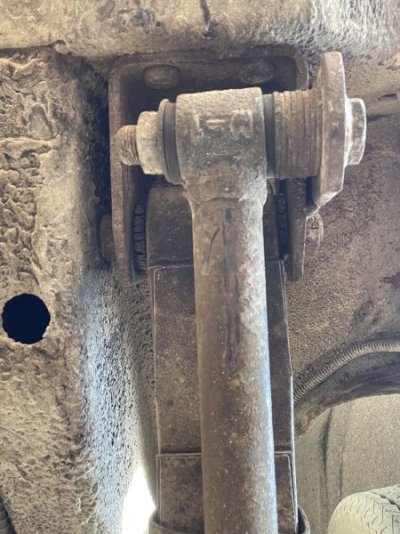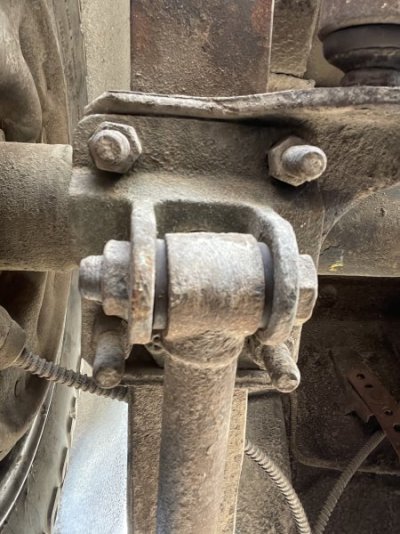I've only owned this 68 Coronet for a couple of weeks. I traded for it sight unseen. Due to a medical issue I haven't had the ability to crawl all over it to see what I got. Finally got to take a limited look underneath the car today and found a traction bar setup I haven't seen before. It looks homemade or modified especially on the front end. Seems like a lot of load would be put on the one sided front mount.
This is the front mount (driver's side)...

This is looking toward the rear...

And this is the rear mount, which actually doesn't look homemade...

This car sat in a garage for about 30 years according to the guy I got it from, so this might be some old tech stuff that Bubba tweaked on. Any ideas?
This is the front mount (driver's side)...

This is looking toward the rear...

And this is the rear mount, which actually doesn't look homemade...

This car sat in a garage for about 30 years according to the guy I got it from, so this might be some old tech stuff that Bubba tweaked on. Any ideas?
















